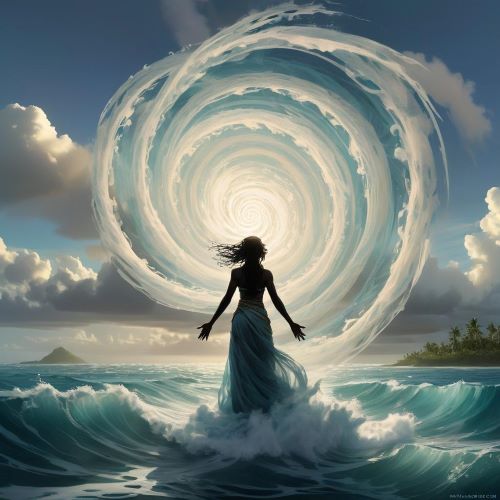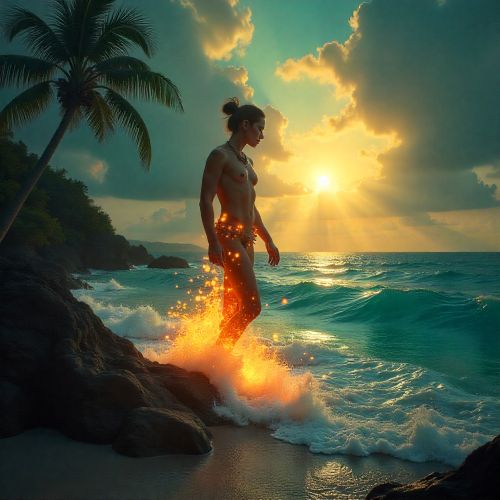Marshallese Mythology
Marshallese mythology, from the scattered coral atolls and lagoons of the Marshall Islands in Micronesia, tells the story of a world born from ocean, light, and ancestral power. For the Marshallese people, the sea is both the origin of creation and the heart of existence — a living, sacred force that connects land, sky, and spirit. Their myths, carried through chants, navigation songs, and storytelling, reveal a cosmology in which gods, humans, and the natural world are bound together in an eternal rhythm of balance and respect. Every reef, wave, and star in the Marshall Islands holds a story, and every island is a sacred reminder of divine craftsmanship.
At the center of Marshallese creation mythology stands Lowa, the supreme creator god who shaped the heavens, the ocean, and the islands. Lowa brought forth the land from the sea, giving form to coral and sand, and breathed life into the first humans. He is often associated with light and the rising sun, symbolizing knowledge and divine order. Working alongside Lowa is Letao, the clever and mischievous trickster figure who embodies human curiosity and imperfection. Letao, born of divine parents, travels between heaven, earth, and ocean, playing pranks on gods and mortals alike. Yet through his cunning and chaos, Letao teaches important lessons about humility, wisdom, and the consequences of pride. His adventures mirror the unpredictable nature of the sea — sometimes calm and generous, other times dangerous and unforgiving.
One of the most famous Marshallese myths recounts how Letao built a bridge between heaven and earth. He sought to prove that mortals could reach the gods, but his arrogance led to his downfall when the bridge collapsed into the ocean, scattering the fragments that became the atolls of the Marshall Islands. This myth not only explains the geography of the islands but also reflects the Marshallese philosophy that creation is a balance between divine design and human folly — that wisdom comes from harmony with, not dominance over, nature.
The Marshallese pantheon also includes spirits associated with wind, storms, and navigation. These deities and ancestral spirits are invoked through chants and navigational rituals, guiding sailors safely across vast distances using the stars, swells, and currents. The traditional stick charts of the Marshall Islands, intricate maps made of palm ribs and shells, are not just tools of navigation — they are spiritual symbols representing the interconnected pathways of gods, ancestors, and ocean waves. Each journey across the sea is both physical and sacred, a reenactment of the divine voyages that created the world.
For the Marshallese, mythology is not confined to the past. It continues to shape identity, morality, and environmental stewardship. The ocean is revered as both home and deity — a reminder that survival depends on balance, respect, and remembrance of ancestral wisdom. Marshallese mythology endures as a living heritage, a song of sea and spirit that still echoes across the Pacific, reminding humanity that creation is vast, mysterious, and beautifully intertwined.



